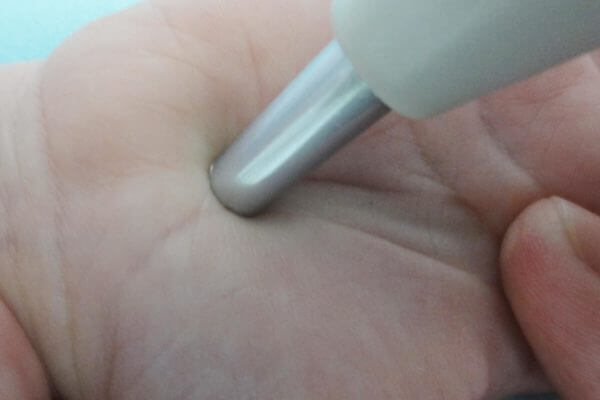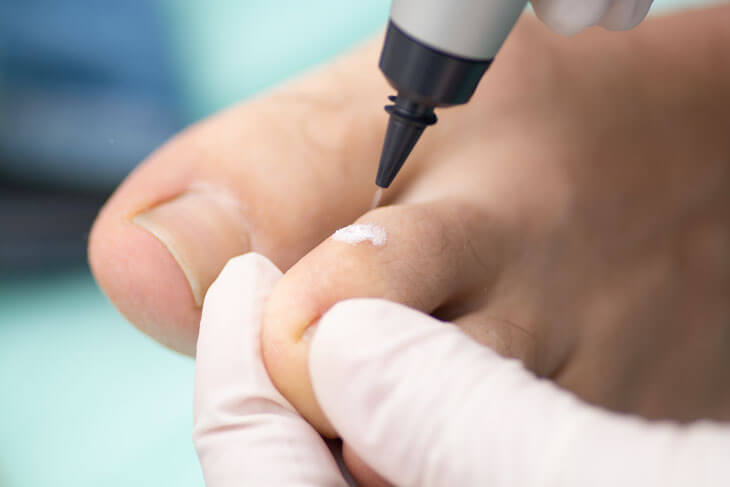Cryotherapy
What is cryotherapy?
Cryotherapy (cold therapy or “freezing”) is a well-tested and very effective treatment method in dermatology. Skin changes are selectively destroyed by targeted freezing and slow thawing.
How does cryotherapy work?

CONTACT PROCEDURE:
Liquid Nitrogen (N2-Liquid):
A cotton swab is first dipped in liquid nitrogen and then pressed directly onto the area to be treated for a few seconds. After thawing the lesion, this process can be repeated depending on the thickness or nature of the lesion.
Cryoprobes/stamps:
With special devices, which have a cooling metal attachment of different sizes, skin changes can be frozen in a targeted manner.

Spray method:
Liquid nitrogen:
Using a special container with a spray nozzle and trigger, liquid nitrogen can be applied even more precisely to the skin.
Carbon dioxide capsules (CO2):
Here, CO2 is applied as a cooling medium via cartridges, as they are also used to produce soda water, mostly via handy devices by pressing a trigger. The temperature reached is about half that of using nitrogen.
Blistering occurs as a side effect, whereby the treated tissue is rejected. A crust forms, which falls off after 10-14 days.
What can be treated with cryotherapy?
The spectrum of cryotherapy ranges from the treatment of simple viral warts, scars and age spots to the treatment of superficial variants of white skin cancer and its precursors.
Early childhood hemangiomas respond particularly well to contact cryotherapy at around -30 °C. The treatment is minimally invasive and there is scar-free healing.
Individual consultation
Individual consultation: We would be happy to consult you extensively on the individual examinations and treatment options in one of our offices. You are also welcome to schedule an appointment online.
